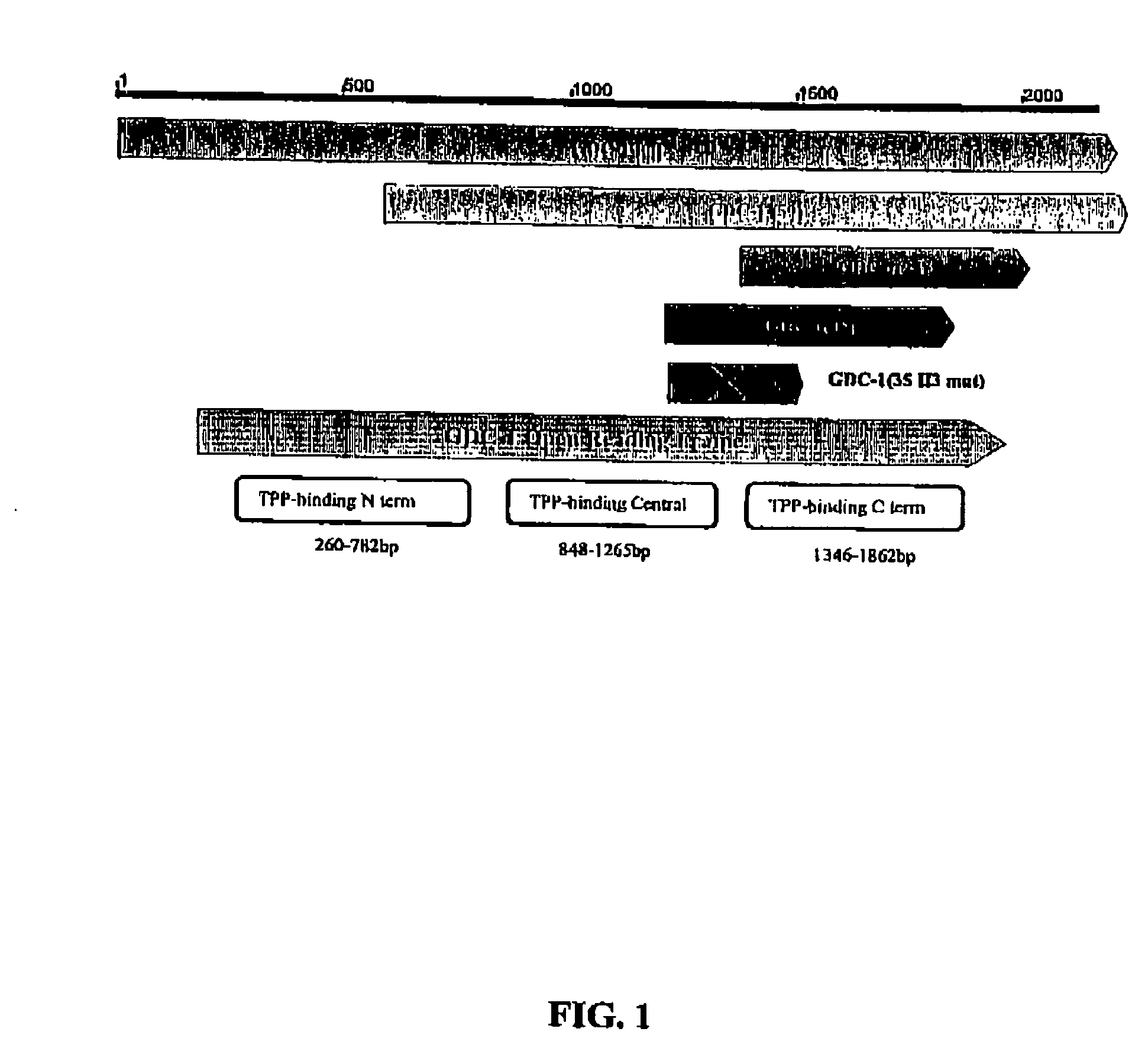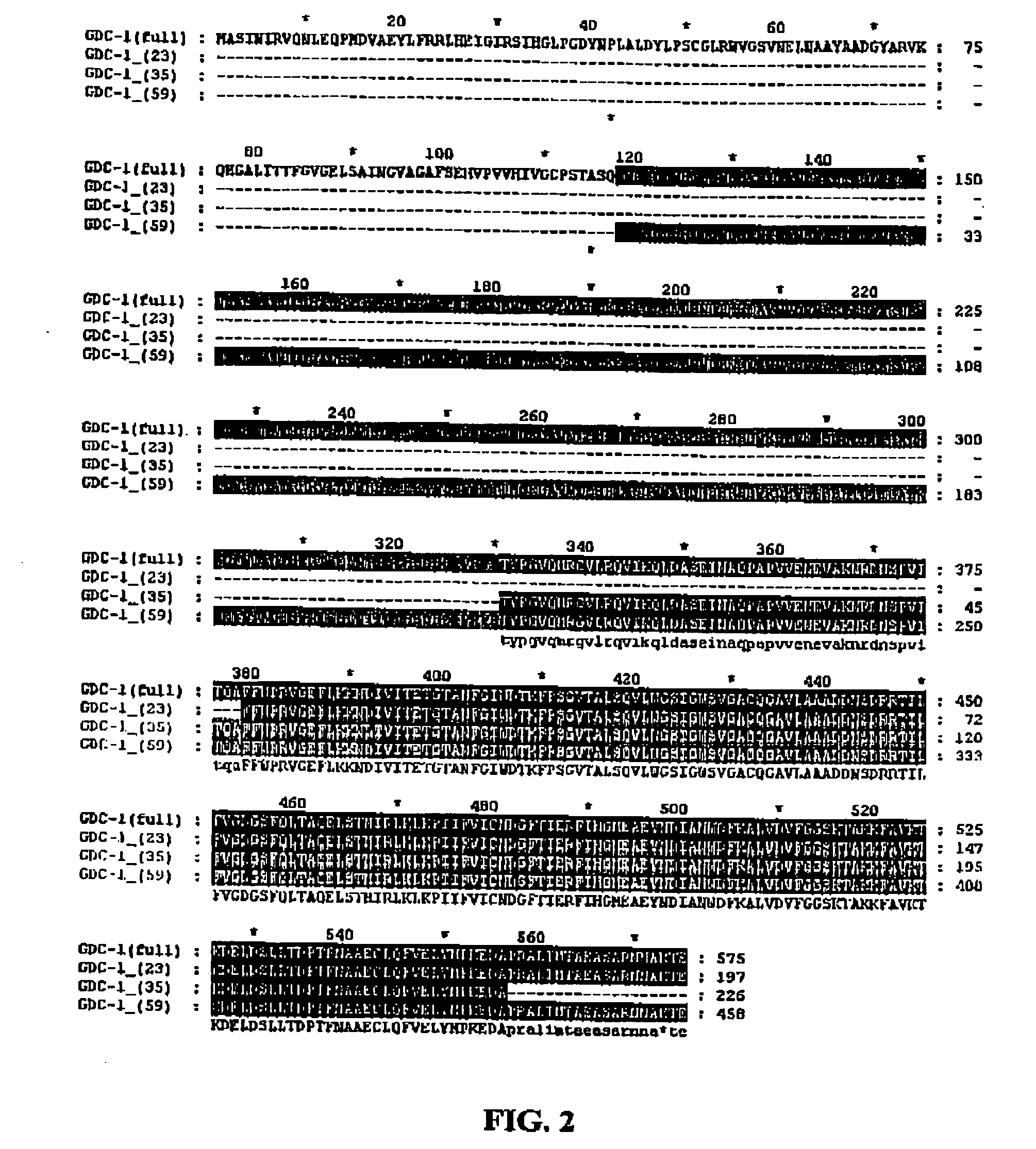GDC-1 genes conferring herbicide resistance
a technology of herbicide resistance and gene expression, applied in the field of genes encoding herbicide resistance, can solve the problems of toxic to bacterial cells, not only killing plant cells, but also toxic to these bacteria
- Summary
- Abstract
- Description
- Claims
- Application Information
AI Technical Summary
Benefits of technology
Problems solved by technology
Method used
Image
Examples
example 1
Isolation of ATX6394
[0080] Glyphosate-resistant fungi were isolated by plating samples of soil on Enriched Minimal Media (EMM) containing glyphosate as the sole source of phosphorus. Since EMM contains no aromatic amino acids, a strain must be resistant to glyphosate in order to grow on this media.
[0081] Two grams of soil was suspended in approximately 30 ml of water, and sonicated for 30 seconds in an Aquasonic sonicator water bath. The sample was vortexed for 5 seconds and permitted to settle for 60 seconds. This process was repeated 3 times. 100 μl of this suspension was added to 2 ml of Enriched Minimal Media II (EMM II) supplemented with 4 mM glyphosate (pH 6.0) EMMII contains Solution A (In 900 mls: 10 g sucrose (or other carbon source), 2 g NaNO3, 1.0 ml 0.8 M MgSO4, 1.0 ml 0.1 M CaCl2, 1.0 ml Trace Elements Solution (In 100 ml of 1000× solution: 0.1 g FeSO4.7H2O, 0.5 mg CuSO4.5H2O, 1.0 mg H3BO3, 1.0 mg MnSO4.5H2O, 7.0 mg ZnSO4.7H2O, 1.0 mg MoO3, 4.0 g KCl)) and Solution B ...
example 2
Construction of cDNA Library from Strain ATX6394
[0083] ATX6394 was grown in (liquid media L+phosphorous) containing 5 mM glyphosate, and total RNA was isolated using Trizol reagent (Invitrogen). poly(A)+ mRNA was isolated from total RNA using Poly(A) Purist mRNA Purification kit (Ambion). cDNA was synthesized from polyA+ mRNA using ZAP cDNA Synthesis kit from Stratagene, and cloned into the lambda Zap II expression vector (Stratagene).
example 3
In vivo Excision of cDNA Clones
[0084] The ATX6394 cDNA library was excised in bulk as per manufacturers protocol (Stratagene), transfected into the SOLR strain of E. coli (Stratagene), plated directly onto M9 minimal media plates containing thiamine, proline, ampicillin and 5 mM glyphosate and incubated at 37° C. (M9 media contains 30 g Na2HPO4, 15 g KH2PO4, 5 g NH4Cl, 2.5 g NaCl, and 15 mg CaCl2).
PUM
| Property | Measurement | Unit |
|---|---|---|
| Fraction | aaaaa | aaaaa |
| Temperature | aaaaa | aaaaa |
| Density | aaaaa | aaaaa |
Abstract
Description
Claims
Application Information
 Login to View More
Login to View More - R&D
- Intellectual Property
- Life Sciences
- Materials
- Tech Scout
- Unparalleled Data Quality
- Higher Quality Content
- 60% Fewer Hallucinations
Browse by: Latest US Patents, China's latest patents, Technical Efficacy Thesaurus, Application Domain, Technology Topic, Popular Technical Reports.
© 2025 PatSnap. All rights reserved.Legal|Privacy policy|Modern Slavery Act Transparency Statement|Sitemap|About US| Contact US: help@patsnap.com



